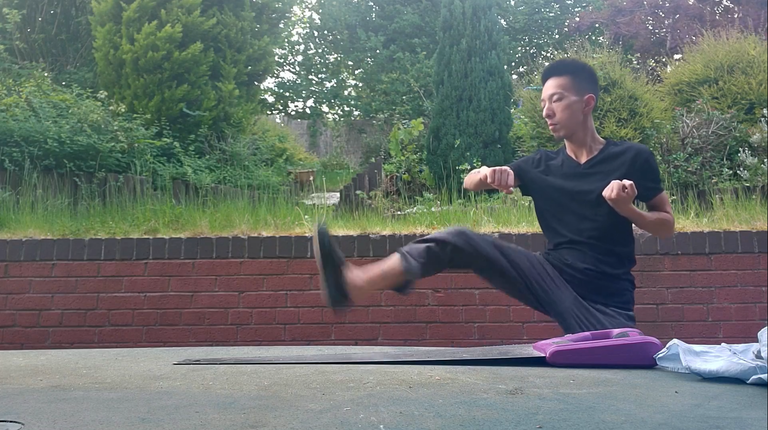尋橋 Cham Kiu "Seeking The Bridge" (Full)

Wing Chun puts emphasis on economic movement and encourages its practitioners to "feel" through their opponents' defenses and to utilize the incoming attacks with parrying, deflection, rapid punches, and finger pokes. Slapping and defensive maneuvers are used to distract the opponent to make them shift their defenses away from their centerline.
Wing Chun favors a relatively high, narrow stance with the elbows close to the body. Within the stance, arms are generally positioned across the vital points of the centerline with hands in a vertical "wu sau" ("protecting hand" position). This puts the practitioner in a position to make readily placed blocks and fast-moving blows to vital striking points down the center of the body, i.e. the neck, chest, belly, and groin. Shifting or turning within a stance is done on the heels, balls, or middle (K1 or Kidney point 1) of the foot, depending on the lineage. Some Wing Chun styles discourage the use of high kicks because this risks counter-attacks to the groin. The practice of "settling" one's opponent to brace them more effectively against the ground helps one deliver as much force as possible.
The second form, Cham Kiu "seeking the bridge", focuses on coordinated movement of body mass and entry techniques to "bridge the gap" between practitioner and opponent, and move in to disrupt their structure and balance. Close-range attacks using the elbows and knees are also developed here. It also teaches methods of recovering position and centerline when in a compromised position where Siu Nim Tau structure has been lost. For some branches, bodyweight in striking is a central theme, either from pivoting (rotational) or stepping (transitional). Likewise, for some branches, this form provides the engine to the car. For branches that use the "sinking bridge" interpretation, the form has more emphasis on "uprooting", adding multi-dimensional movement and spiraling to the already developed engine